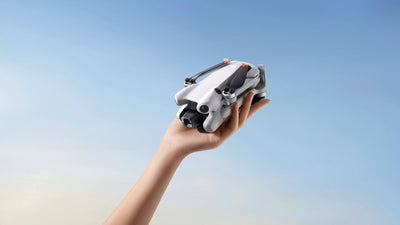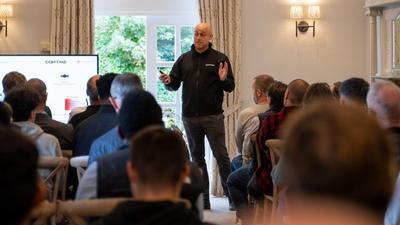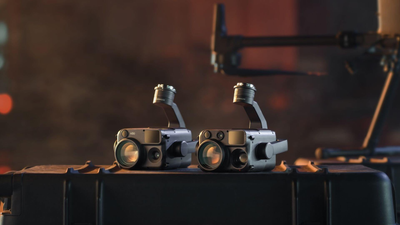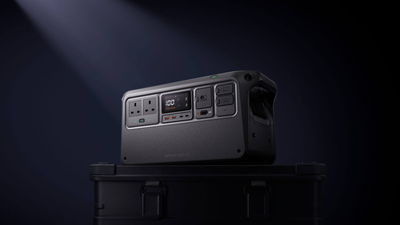Can You Fly A Drone Over Private Property In The UK?
- by Stefan Gandhi
Flying drones has evolved from a niche hobby into a mainstream activity, widely embraced by creatives, surveyors, adventurers and tech enthusiasts. But as drones become more prevalent in British skies, questions around airspace rights, privacy and property boundaries grow louder. One of the most common concerns: is it legal to fly a drone over someone else's private property in the UK?
The Short Answer: Yes, With Conditions
In the United Kingdom, flying a drone over private property is not illegal in itself. The airspace above your home does not belong to you in a strict legal sense. However, the act of flying over someone's property can easily intersect with civil laws, aviation regulations and privacy protections.
Understanding where legality begins and personal rights end is essential for both drone operators and concerned homeowners. Whether you are capturing cinematic views or mapping a construction site, flying responsibly is key.
Understanding UK Airspace Rights
British law does not give homeowners unlimited control over the air above their property. The airspace becomes regulated by the Civil Aviation Authority (CAA) shortly above ground level. Technically, the CAA controls airspace from as low as where drone operations begin to affect aviation safety, generally accepted to be from ground level upwards in the context of drones.
That said, the ownership of airspace is a grey area in civil law. While you do not own the sky above your garden, any interference with your enjoyment of the land, such as low flying or intrusive noise, can give rise to a nuisance claim.
Moreover, drones taking off or landing on private property without permission are engaging in trespass. That physical interaction with the land is treated differently from just flying above it. Homeowners have legal recourse if a drone uses their land without consent.
The Drone Code: Legal Compliance is Mandatory
The CAA's Drone and Model Aircraft Code lays out mandatory safety and legal guidelines for flying in the UK. Whether you're flying for fun or commercial gain, adherence to these rules is critical:
- Drones must be flown below 120 metres (400 feet)
- Drones must always stay within visual line of sight
- A minimum horizontal distance of 50 metres must be kept from people and property not under the operator's control
- No flights over crowds or congested areas
Additionally, drone pilots must be registered with the CAA and carry a valid operator ID and flyer ID if the drone weighs more than 250g or has a camera.
Failing to follow these rules can result in fines, criminal charges or loss of flying privileges. Enforcement is increasingly strict as drone use grows.
Privacy: Where the Law Gets Personal
Even when flying legally, drone operators must be cautious of the UK’s privacy laws. Capturing images or video footage that includes individuals or their homes can potentially breach the UK General Data Protection Regulation (UK GDPR).
The Information Commissioner's Office (ICO) advises that individuals recording with drones should:
- Avoid recording people without consent
- Provide signage or notice where possible
- Securely store and limit access to any footage
If a drone is persistently filming someone’s garden or windows, it may be seen as harassment or a violation of personal privacy. This could lead to complaints to the ICO or civil legal action. The rules apply even if you do not intend to publish the footage, as just possessing intrusive content can be problematic.
Landowner Rights: Take-Offs and Landings
Flying over someone’s land is different from using their land as a base. Drone operators must always secure permission before launching or landing on private property. Without it, they risk trespass accusations and potential legal action.
Drone operators often assume public parks are fair game. However, local councils may have bylaws restricting drone usage. Always check with the relevant authority before using public land for drone activity.
Furthermore, insurance providers may deny claims if you operate from private property without the owner’s consent. Legal clarity protects both you and your drone.
Nuisance and Harassment: Civil Law Protections
Even if a drone flight adheres to CAA rules, the homeowner may still have civil recourse if the drone causes undue disruption. Examples include:
- Repeated low-altitude flights over the same property
- Obvious attempts to film or observe private activities
- Noise disturbances or safety concerns
Under common law, nuisance arises when an activity interferes with someone’s enjoyment of their land. Harassment laws can also apply, especially in cases of persistent or targeted surveillance. Victims may pursue injunctions, compensation, or restraining orders.
The police may not intervene in every incident, but they can act if the behaviour amounts to harassment or criminal trespass.
What to Do If a Drone Flies Over Your Property
If you believe a drone is flying illegally or invading your privacy:
- Record the incident with photos or video, including date and time
- Avoid confrontation; never attempt to damage or capture the drone
- Report the activity to the police if you believe laws are being broken
- You can also report concerns to the CAA and ICO depending on the nature of the incident
- Consult a solicitor for legal advice if the issue persists
In most cases, a civil solution is preferable to escalation. A calm conversation with the drone operator can often resolve the matter. But if that fails, knowing your rights is crucial.
Best Practice for Responsible Operators
To fly responsibly and avoid disputes:
- Plan your route to avoid overflying private homes
- Fly at respectful altitudes and avoid lingering over properties
- Use geofencing and modern navigation tools to set safe flight zones
- Inform nearby residents if your drone activity will be visible from their home
- Avoid early morning or late-night flights that may disturb residents
- Respect no-fly zones and follow updated NOTAMs (Notice to Airmen)
Transparency, courtesy and compliance are your best tools for conflict-free flying. Modern drones come equipped with intelligent flight controls, automated safety features and GPS logging, so use them wisely.
Implications for Commercial Operators
Commercial drone operators must be even more vigilant. A2 Certificate of Competency (A2 CofC) or General Visual Line of Sight Certificate (GVC) are mandatory for most commercial flights near people or structures.
Operating professionally brings additional responsibilities:
- Full risk assessments must be conducted
- Flight plans should be documented and justifiable
- Data collected must comply with UK GDPR rules
Clients may also request proof of insurance and operator qualifications. By following best practices, operators protect their reputation and build client trust.
The Rise of Drone Complaints: A Cultural Shift
As drone popularity soars, so do complaints. Community forums, local police stations and regulatory bodies have seen a spike in concerns. These range from noise issues to privacy invasions and safety fears.
Educating the public and normalising drone etiquette can help bridge the gap between enthusiasts and homeowners. Creating a culture of responsibility ensures drones remain a welcomed technology.
Final Thoughts: Shared Skies, Shared Responsibility
Yes, you can fly a drone over private property in the UK, but legality hinges on how and where you do it. Respect for privacy, awareness of legal boundaries and adherence to CAA rules are non-negotiable.
As drones continue to shape the future of photography, surveying and leisure, understanding the airspace you occupy is not just smart, it is the law.
To deepen your knowledge of drone regulations and fly with confidence, explore Coptrz’s expert-led online training, including the A2 CofC and GVC courses, designed to keep you compliant and airspace-aware.




